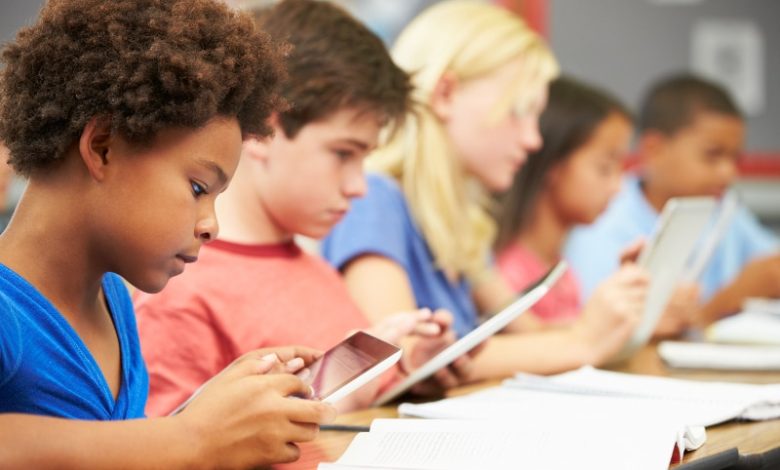The Effects of Technology on Education

Technology is one of humankind’s greatest inventions, and so is its application in human lives. No part of human life is untouched by technology and various advancements in the modern era. Everything that humans use – from the morning alarm to the late-night chats – is a technological boon. Technology also has numerous effects in the field of education to do online exam help.
These days education uses various technical applications to make the process easier for the students. It is believed that technological advancements can enhance the process and quality of education. Presently the entire world is recovering from a pandemic situation. Amid such conditions, students could continue learning, all thanks to technology.
This blog intends to provide all the necessary knowledge to them. The below-mentioned points will showcase all the generalized positive and negative effects that technology has on the education system.
4 Advantages of Using Technical Advancement in Education
Although not yet very popular, using technology in the classroom is very helpful. Instructors using such development have acknowledged that it has made their work more accessible and interesting. Also, it has somehow helped boost students’ interest in attending classes that too sincerely.
Below are a few points to help you understand how technological innovations and advancements have made it easier for the education sector to perform better.
- Scope for a more dynamic environment
Often, technology is considered the distracting factor that hampers the kids’ study time. But it is not entirely true. If used properly, technology can also influence students to participate in their classroom more actively. Learning can be made more interactive and fun using technology and gadgets. For example, if we use the traditional method, reading the chapter and giving the required verbal explanation can make the class monotonous.
It might happen that after a certain point of time, students start losing interest as well. But in the same situation, if the teacher can use some fun activities available on the internet with the help of a laptop and projector, students will be hooked to the class. Additionally, their net amount of learning will also magnify in this way.
- Incorporates different learning styles
Not every student is the same, and their understanding capability also differs from one another. Hence using one general learning technique might not be equally useful for all. No worries, technology gives instructors the opportunity of using varied techniques while discussing a particular lesson.
For example, they might use different audio-visual tools to explain the chapter in different ways and give each class student a better understanding of the lesson. For example, suppose, while explaining photosynthesis, an instructor can use infographics and videos an instructor can use infographics and videos without just explaining the process and writing the equation on the board. It will help students see the various steps in the form of pictures and motion pictures, which will be easier to memorize.
- Improves interaction among students
It has been found that integrating technology in the classroom has improved the interaction among students besides their interaction with the instructor. Teachers acknowledge that using technology-based tasks and classroom activities demands teamwork or at least requires everyone’s aspects and perspectives.
In such a situation, it becomes essential for students to communicate with their peers and friends, even if it is just for performance. For example, during an e-quiz, the class needs to divide as per instructions given in the trivia manual. This will help them observe each other during the activity and open the scope of learning from their peers.
- Scope for technical training
Using technology in classes allows students to learn about various technological developments. They also get to see how to use them. Besides providing them with enough knowledge on their subject, this gives them indirect training on using such technical facilities.
Also, this teaches them about the good side of using technology. Once they become interested in such activities, they are highly likely only to use most technological facilities for learning purposes. It does not ensure misuse of technology but at least holds a high probability of reducing the same.
4 Disadvantages of Using Technical Advancements in Education
Despite the many advantages technology has in education, there are certain disadvantages. The same are listed below –
- Expensive – Though using technological advancements in education might be helpful, the expenses in setting the same are comparatively a lot high. Hence every institution can’t include such facilities.
- Detachment from the real world – Constant use of technology during learning often results in students getting addicted to the facilities. This reduces the time they spend in the real world away from computers.
- Not all can afford it –When technical facilities are being used at school, naturally, students would prefer using the same back at home. But unfortunately, not all families can bear such expenses, thus creating a gap for a particular section of students.
- Good habits are replaced –Usage of technological advancements in learning often eradicates good practices like book reading, writing, etc. Students already know that they will get access to everything required in the forms of pdfs and videos, which is why they avoid traditionally taking the trouble of reading or writing.
Final Thoughts,
Involvement of technical evolution in education receives mixed reactions from different teachers and students. On the one hand, some of them are in complete awe of the process, while others do not support complete inclusion. Keeping that in mind, we can say that technological extension is mainly preferred in the education sector when blended with the traditional counterpart.




